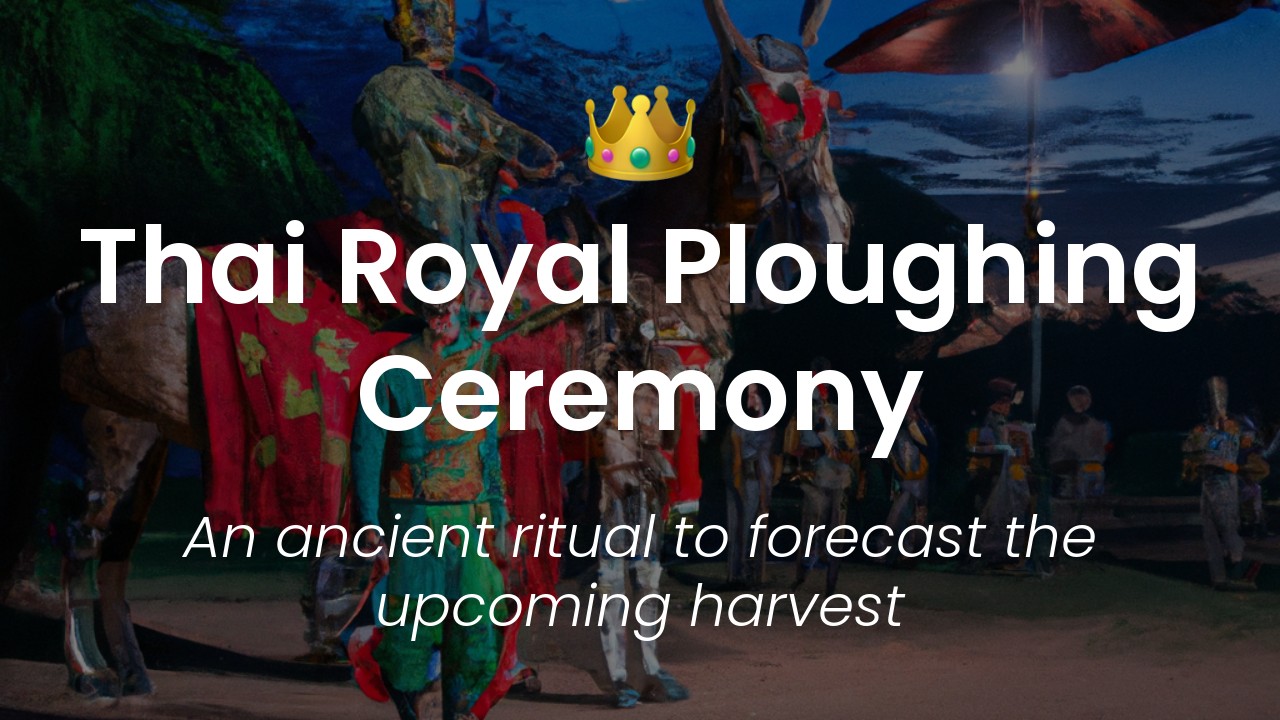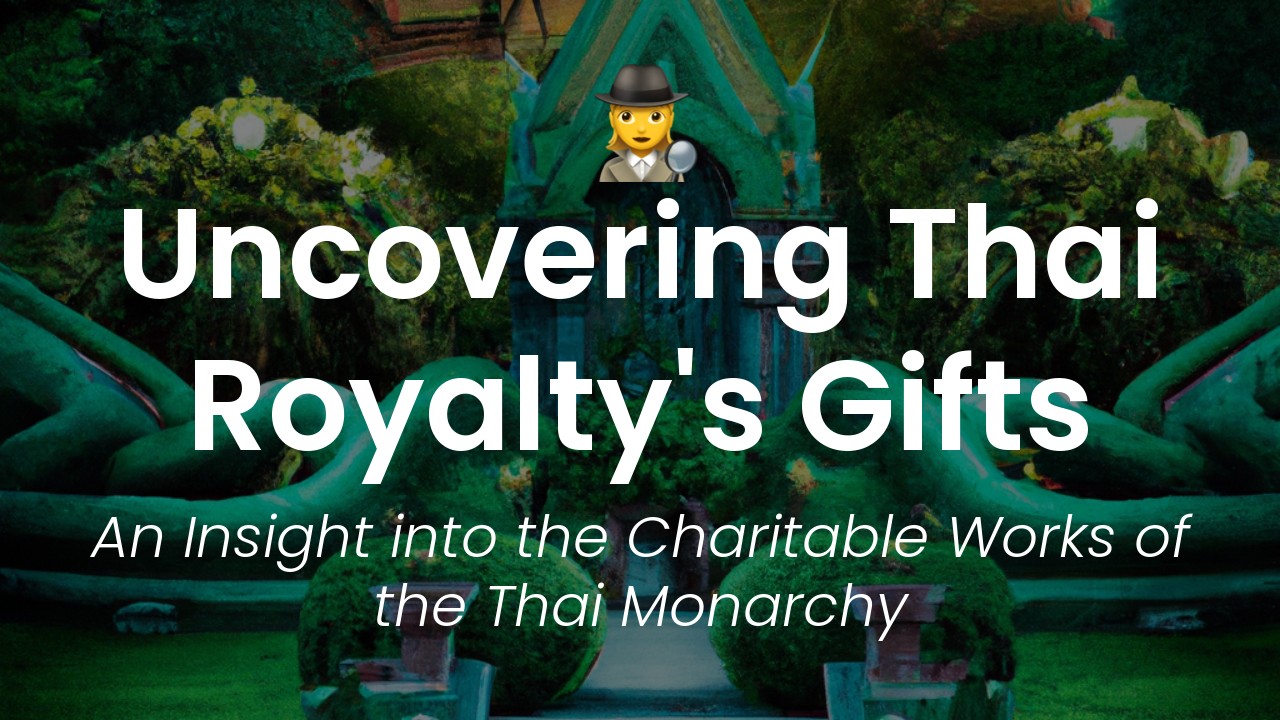Greetings, dear readers! As a Thai native, I take great pride in sharing with you about a remarkable event that takes place annually in my home country. Today, I invite you to join me as I uncover the rich cultural significance of the Royal Ploughing Ceremony, a mesmerizing spectacle deeply rooted in Thai tradition.
This unique celebration has been observed in Thailand since the Sukhothai period, which dates back to the 13th century. The Royal Ploughing Ceremony marks the official start of the rice-growing season and seeks the blessings of the gods for bountiful harvests and prosperity in the year ahead.
As you may have guessed, the ceremony involves the actual ploughing of a ceremonial field by two sacred oxen. It takes place on a plot of land near the Grand Palace in Bangkok, and is attended by some of the highest-ranking officials of the Royal Family, along with dignitaries and spectators from across the globe.
If you have never before experienced the mystique and grandeur of this age-old, quintessentially Thai tradition, I encourage you to read on. In this article, I will share with you all the details of this momentous event and its historical significance, as well as insider tips on how to make the most of the experience. So without further ado, let us discover the Majestic Royal Ploughing Ceremony in Thailand!
History of the Ceremony
The Royal Ploughing Ceremony is a significant event in Thailand's cultural calendar and is held annually in early May to mark the start of the rice-growing season. The ceremony dates back to ancient times, with records indicating that it was performed during the Sukhothai era, around the mid-1200s. At that time, it was known as the Ploughing of the Sacred Oxen, as a pair of specially selected oxen were used to plough the furrows in preparation for the planting of the rice seedlings.
Over the centuries, the Royal Ploughing Ceremony evolved into a more elaborate event, with the King himself participating in the ceremony along with other members of the royal family. Today, the ceremony is used to predict the success of the rice harvest for the upcoming year and to promote awareness of the importance of agriculture in Thailand.
Date and Location
The Royal Ploughing Ceremony is usually held on the second Monday of May and takes place at Sanam Luang, a large public square in the heart of Bangkok. The venue is adjacent to the Grand Palace and is easily accessible by public transport.
The ceremony starts early in the morning and lasts for several hours, with crowds of locals and tourists alike gathering in the square to watch the proceedings.
Significance and Purpose
The Royal Ploughing Ceremony serves several purposes. Firstly, it is used to predict the success of the upcoming rice harvest. During the ceremony, the pair of sacred oxen are presented with seven bowls of different food items, representing different aspects of the harvest. Depending on which bowl the oxen select first and how much they eat of each bowl, it is believed to indicate the abundance or scarcity of crops for the year ahead.
Secondly, the Royal Ploughing Ceremony is an opportunity to educate people about the importance of agriculture in Thailand. Many modern Thais are city-dwellers and have little connection to the countryside. The ceremony helps to remind people of the vital role that farming plays in the country's economy and culture.
The Ceremony Procession
The Royal Ploughing Ceremony starts with a grand procession, featuring traditional dancers and musicians, as well as participants in colourful costumes representing different regions of the country. The procession makes its way to Sanam Luang square, where the main ceremony takes place.
Once the procession reaches the square, it is time for the ceremonial ploughing to begin. Two specially chosen oxen – usually two-year-old male Bos indicus – are harnessed to a wooden plough and led through the furrows that have been marked out on the field in advance.
Rituals and Offerings
The ploughing of the field is accompanied by a series of rituals and offerings. Before the ploughing starts, the oxen are bathed and decorated with brightly coloured clothes and flowers. During the ceremony, they are presented with seven bowls of rice, corn, beans, sesame seeds, liquor, water, and grass.
After the oxen have ploughed the furrows, they are led away and the farmers and monks who have been waiting nearby rush onto the field to collect the grains of rice that have been scattered by the plough.
Once the ceremony is over, the grains of rice and other offerings are taken to the temple, where they are blessed by the monks.
Cultural Activities
In addition to the ceremonial ploughing and offerings, the Royal Ploughing Ceremony also features a wide range of cultural activities and displays. There are usually exhibitions of traditional crafts and skills, such as weaving, pottery, and woodcarving, as well as displays of local cuisine and traditional dress.
There are also performances of traditional Thai music and dance, as well as demonstrations of martial arts and other traditional forms of physical exercise.
Interesting Facts
- The Royal Ploughing Ceremony has been held in Thailand for over 700 years, making it one of the country's oldest and most important traditions.
- The plough that is used in the ceremony is made of wood and has been used for over 300 years.
- The seven food items that are presented to the oxen during the ceremony were traditionally chosen for their agricultural significance, as they represent the different crops that are grown in Thailand.
- In recent years, there have been concerns about the welfare of the sacred oxen used in the ceremony, with animal rights groups calling for the use of oxen to be discontinued. However, the government has insisted that the ceremony is an important part of Thai culture and will continue to be performed.
Overall, the Royal Ploughing Ceremony is a fascinating and colourful event that provides a unique insight into Thai culture and tradition. Whether you're a history buff, an avid foodie, or simply interested in experiencing something new, the ceremony is well worth a visit if you're ever in Bangkok in May.







